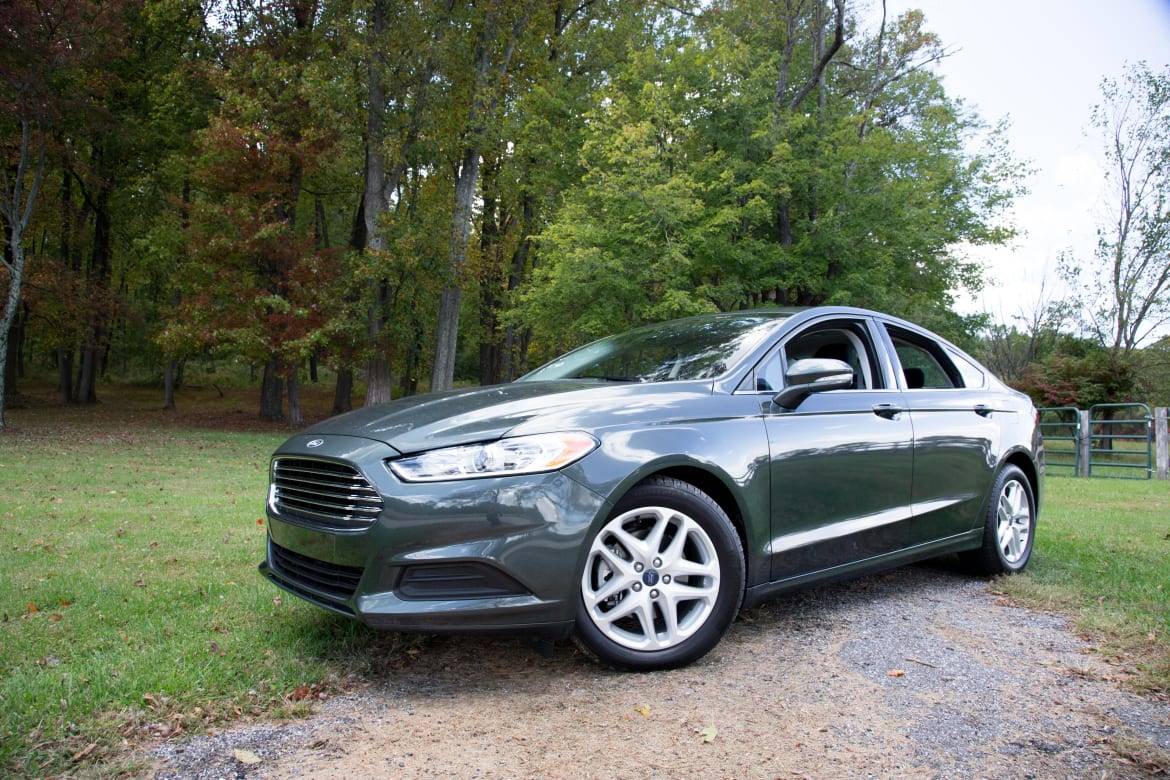2015 Ford Fusion: Car Seat Check


There’s a lot to like about the Ford Fusion, from its turbocharged four-cylinder engine to its distinctive looks. However, after installing child-safety seats in the 2015 Fusion equipped with optional inflatable rear seat belts, I can’t say that I like the Fusion’s lower Latch anchors.
The lower Latch anchors sit nearly 3 inches into the seat cushions. Other automakers place their anchors either out in the open or about an inch into the cushions. Occasionally, I’ll encounter anchors that are 2 inches into the cushions; this deep placement makes it difficult to connect to the anchors. Trying to reach the Fusion’s anchors was, well, trying, but what made them even more difficult was the lack of space around them, so maneuvering was challenging. While I had some trouble connecting to the 2013 Fusion’s Latch anchors because of seat belt buckle interference when I last tested this car, it was nowhere near this difficult. The 2013 Fusion had a traditional rear seat belt, while the 2015 test car had the optional inflatable seat belts. Perhaps that explains the difference.
How many car seats fit in the second row? Two
What We Like
- The optional inflatable rear seat belts can be used to install child-safety seats. While the shoulder belt cannot be put into a locking mode as is done with many traditional seat belts, you can put the lap belt in locking mode. To do this, pull the lap belt all the way out and then start to feed it back into the retractor. When it’s in locking mode, you’ll hear a clicking or ratcheting sound.
- The three top tether anchors were easy to use and are on the rear shelf under hinged plastic covers.
- The rear-facing infant and convertible seats had plenty of room in the backseat. There was no need to move the front passenger seat forward to accommodate either of them.
- After struggling for a long time to connect to the Latch anchors, the forward-facing convertible fit well.
- The booster seat also fit well. The inflatable seat belt has a lot more heft to it with a large, easy-to-grasp buckle that should be easy for children to use independently.
What We Don’t
- It took a lot of time and effort to connect the car seats — rear-facing infant and rear- and forward-facing convertible — to the lower Latch anchors.
- Because it was difficult to install the car seats with the anchors, all the car seats’ scores were downgraded.










Grading Scale
A: Plenty of room for the car seat and the child; doesn’t impact driver or front-passenger legroom. Easy to find and connect to Latch and tether anchors. No fit issues involving head restraint or seat contouring. Easy access to the third row.
B: Plenty of room. One fit or connection issue. Some problems accessing third row when available.
C: Marginal room. Two fit or connection issues. Difficult to access third row when available.
D: Insufficient room. Two or more fit or connection issues.
F: Does not fit or is unsafe.
About Cars.com’s Car Seat Checks
Editors Jennifer Newman and Matt Schmitz are certified child safety seat installation technicians. Editor Jennifer Geiger is working on renewing her certification.
For the Car Seat Check, we use a Graco SnugRide Classic Connect 30 infant-safety seat, a Britax Marathon convertible seat and Graco TurboBooster seat. The front seats are adjusted for a 6-foot driver and a 5-foot-8 passenger. The three child seats are installed in the second row. The booster seat sits behind the driver’s seat, and the infant and convertible seats are installed behind the front passenger seat.
We also install the forward-facing convertible in the second row’s middle seat with the booster and infant seat in the outboard seats to see if three car seats will fit; a child sitting in the booster seat must be able to reach the seat belt buckle. If there’s a third row, we install the booster seat and a forward-facing convertible. To learn more about how we conduct our Car Seat Checks, go here.
Parents should also remember that they can use the Latch system or a seat belt to install a car seat, and that Latch anchors have a weight limit of 65 pounds, including the weight of the child and the weight of the seat itself.
Cars.com photos by Evan Sears

Editor-in-Chief Jennifer Newman is a journalist with more than 25 years of experience, including 15 years as an automotive journalist at Cars.com. Jennifer leads the Editorial team in its mission of helping car shoppers find the vehicle that best fits their life. A mom of two, she’s graduated from kids in car seats to teens behind the steering wheel. She’s also a certified car-seat technician with more than 12 years of experience, as well as member of the World Car Jury, Automotive Press Association and Midwest Automotive Media Association. LinkedIn: https://www.linkedin.com/in/jennilnewman/ Instagram: @jennilnewman
Featured stories









